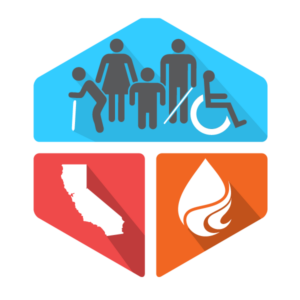The County of Los Angeles is currently working on its Emergency Operation Plan (EOP) and hopes to get your insight to help them create a more disability-inclusive Emergency Operations Plan.
What is an Emergency Operation Plan, or EOP? An EOP is like a big instruction manual that helps us stay safe during emergencies or disasters. It tells us:
- Who will do what: It assigns responsibilities to individuals, teams, or organizations. For instance, it might specify who is in charge of evacuation, who will provide medical
help, and who will handle communication with the public. - When they do it: It outlines the timeline or triggers for taking action. For instance, it might explain when to issue a public warning or when to open emergency shelters.
- Where they’ll do it: It also tells us where these important jobs will happen. This could be where the people in charge of emergencies will gather to make decisions, or where
things like food, water, or first aid kits are stored. - Where they do it: It may specify where operations will be located, such as where an emergency operation center will be set up or where resources are stored.
- How they do it: It provides guidelines or procedures for carrying out these tasks, such as how to evacuate a building safely or how to distribute emergency supplies.
Think of the EOP as our guidebook for staying safe during emergencies. It’s designed to help communities minimize the impact of disasters, protect lives and property and help us get back to normal as quickly
as possible.
The County of Los Angeles is looking to learn from people with lived experiences who may have been or currently are a person living with disabilities.
Please support our community by taking a minute to complete this survey and suggesting to others in our community that they complete it as well. Our lives may very well depend on it.
Please feel free to share this survey with others in your community
The link to the survey, in a multitude of languages, can be found below:


